Houseplants That Clean the Air
You may have heard that some houseplants can clean the indoor air. Not only is this not an urban myth. But, there has actually been research done to find out what plants are good at reducing common indoor pollutants. The National Aeronautics and Space Administration (NASA) in association with the Associated Landscape Contractors of America (ALCA) conducted this study known as The NASA Clean Air Study. According to the findings, in addition to absorbing carbon dioxide and release oxygen, some plants also have the ability to eliminate significant amounts of benzene, formaldehyde, trichloroethylene, xylene, toluene, ammonia from the air. In case you are unfamiliar with these chemicals, here are some sources you should be aware of.
Common sources of benzene in the indoor air include cigarette smoke, exhaust from motor vehicles, smoke from wood burning fires, household products that contain petroleum based chemicals such as glues, paints, furniture wax, and lubricate. Benzene in the indoor air courses asthma, affects blood-forming cells and increases incidents of miscarriage.
Common sources of formaldehyde in home include building materials, smoking, household products, and the use of un-vented, fuel-burning appliances, like gas stoves or kerosene space heaters. Prolonged exposure to formaldehyde has been linked to some cancers.
Trichloroethylene can contaminate indoor air during home renovations. It is a component of resins, glues, varnish and paint removers, vinyl flooring, and home-improvement products. Acute exposure to Trichloroethylene has been linked to a number of health issues, ranging from minor dizziness all the way up to kidney damage and even death.
Sources of xylene in home include synthetic fragrances and paints. Exposure to xylene can course headaches, dizziness, and allergies.
Common sources of toluene indoors include the use of paints and paint-thinners together with tobacco smoke. Exposure to toluene courses headaches, nausea, irritation of the upper respiratory tract, and even birth defects.
Sources of ammonia include animal waste, fertilizers, and home cleaners. People who have pets indoors and who do not clean up the animal waste may have high levels of ammonia. Ammonia can cause eye irritation and burning of the respiratory tract (including the lungs). Children are at greater risk due to their smaller lung surface-area.
Here is the list of robust, relatively easy to grow houseplants that clean indoor air and eliminate benzene, formaldehyde, trichloroethylene, toluen, xylene, and ammonia.
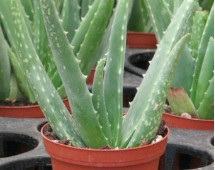 Aloe Vera is a super easy houseplant to grow and really hard to kill. Aloe Vera clears formaldehyde and benzene.
Aloe Vera is a super easy houseplant to grow and really hard to kill. Aloe Vera clears formaldehyde and benzene.
 Gerber Daisy is a beautiful, elegant plant. Gerber Daisy clears trichloroethylene, benzene, and formaldehyde.
Gerber Daisy is a beautiful, elegant plant. Gerber Daisy clears trichloroethylene, benzene, and formaldehyde.
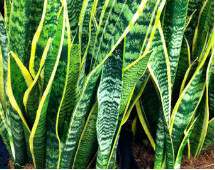 Snake Plant is also known as mother-in-law’s tongue. This houseplant is hard to kill, it is very resilient and super easy to grow. Snake Plant decreases carbon dioxide and rids air of formaldehyde, benzene, trichloroethylene, xylene, and toluene.
Snake Plant is also known as mother-in-law’s tongue. This houseplant is hard to kill, it is very resilient and super easy to grow. Snake Plant decreases carbon dioxide and rids air of formaldehyde, benzene, trichloroethylene, xylene, and toluene.
 Golden Pothos is easy, fast-growing vine. It stays green even when it is kept in the dark. Golden Pothos clears formaldehyde.
Golden Pothos is easy, fast-growing vine. It stays green even when it is kept in the dark. Golden Pothos clears formaldehyde.
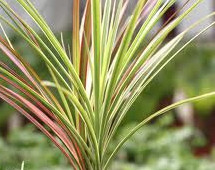 Red-edged Dracaena is an evergreen tree. You need a lot of space for this one because red-edged dracaena grows 8 to 15 feet high and 3 to 8 feet wide in the indoor conditions. It clears benzene, xylene, trichloroethylene, and formaldehyde.
Red-edged Dracaena is an evergreen tree. You need a lot of space for this one because red-edged dracaena grows 8 to 15 feet high and 3 to 8 feet wide in the indoor conditions. It clears benzene, xylene, trichloroethylene, and formaldehyde.
 English Ivy is a climbing vine that thrives in the kitchens or smaller spaces with few windows and little sunshine. English Ivy reduces airborne fecal-matter particles and filters out formaldehyde, benzene, trichloroethylene, xylene, toluene.
English Ivy is a climbing vine that thrives in the kitchens or smaller spaces with few windows and little sunshine. English Ivy reduces airborne fecal-matter particles and filters out formaldehyde, benzene, trichloroethylene, xylene, toluene.
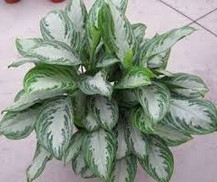 Chinese Evergreen is easy to care for plant. With low light, it can grow and produce blooms and red berries. Chinese Evergreen clears benzene and formaldehyde.
Chinese Evergreen is easy to care for plant. With low light, it can grow and produce blooms and red berries. Chinese Evergreen clears benzene and formaldehyde.
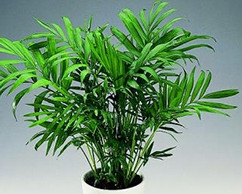 Bamboo Palm will grow fine in shady indoor areas. It clears formaldehyde, xylene, toluene.
Bamboo Palm will grow fine in shady indoor areas. It clears formaldehyde, xylene, toluene.
 Areca Palm likes filtered light but it does not respond well to over-watering. Areca Palm clears xylene and toluene.
Areca Palm likes filtered light but it does not respond well to over-watering. Areca Palm clears xylene and toluene.
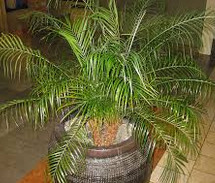 Pigmy Date Palm or Dwarf Date Palm needs moist, and well-draining soil, and indirect sunlight. It does not require much care. Pigmy Date Palm clears formaldehyde, xylene, toluene.
Pigmy Date Palm or Dwarf Date Palm needs moist, and well-draining soil, and indirect sunlight. It does not require much care. Pigmy Date Palm clears formaldehyde, xylene, toluene.
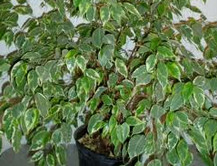 Weeping Fig is sold in the stores as just “ficus tree”. It is very popular houseplant even though it is not that easy to take care of. It needs a bright room and consistent watering. However, do not overwater it; otherwise, it will shed its leaves and suffer from root rot. Ficus tree clears formaldehyde,xylene, toluene.
Weeping Fig is sold in the stores as just “ficus tree”. It is very popular houseplant even though it is not that easy to take care of. It needs a bright room and consistent watering. However, do not overwater it; otherwise, it will shed its leaves and suffer from root rot. Ficus tree clears formaldehyde,xylene, toluene.
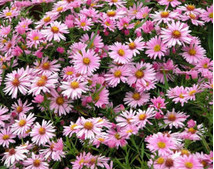 Chrysanthemum is my favorite flower. This houseplant is unique because it clears many pollutants including benzene, trichloroethylene as well as formaldehyde, xylene, toluene, and ammonia. Chrysanthemum loves bright light. Its buds will not open unless it is sitting in direct sunlight.
Chrysanthemum is my favorite flower. This houseplant is unique because it clears many pollutants including benzene, trichloroethylene as well as formaldehyde, xylene, toluene, and ammonia. Chrysanthemum loves bright light. Its buds will not open unless it is sitting in direct sunlight.
Recommended Books about Houseplants that Clean the Air

Wonderful article! I was aware plants help clean the air, but I had no idea of the stuff IN the air.